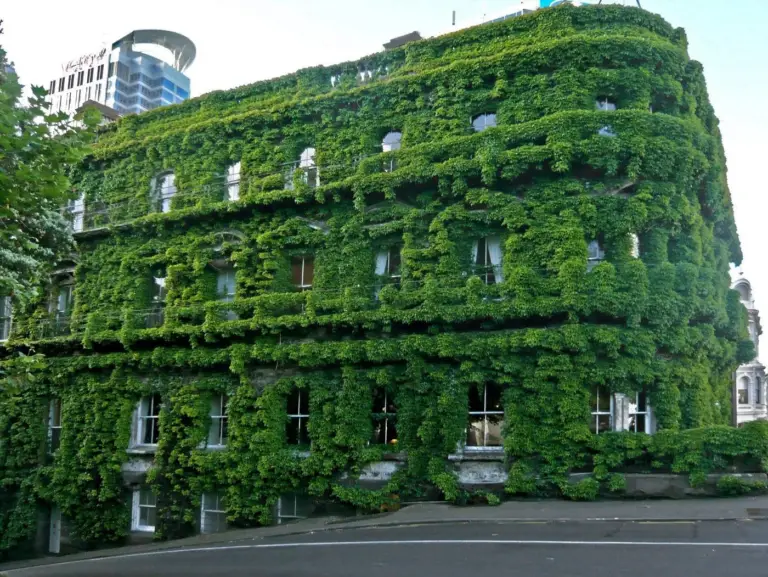
Green Building Insurance: A Guide to Sustainable green Coverage
As the world moves towards a more sustainable future, businesses and homeowners are increasingly adopting eco-friendly practices and infrastructure. Green building insurance is an essential aspect of this transition, offering specialized coverage for environmentally friendly buildings and projects.
This article delves into what green building insurance is, how it works, and its many benefits, making it a vital consideration for those invested in sustainable development.
What is Green Building Insurance?
It is a specialized type of insurance policy designed to cover the unique risks associated with eco-friendly buildings, construction materials, and energy-efficient systems. These policies not only protect against traditional risks like damage or loss but also encourage sustainable practices by providing coverage for green materials and systems during repair or reconstruction.
This form of insurance is especially important for buildings designed with sustainability in mind, such as those certified by organizations like LEED (Leadership in Energy and Environmental Design) or BREEAM (Building Research Establishment Environmental Assessment Method).
How Does this type of Insurance Work?
It operates much like standard property insurance but with additional considerations for environmentally friendly features. Here’s how it works:
1. Green Replacement Coverage:
If a green building or its eco-friendly components are damaged, green building insurance ensures they are replaced or repaired using sustainable materials. For example, if a building’s solar panels are damaged in a storm, the policy would cover the costs of replacing them with energy-efficient alternatives, not standard non-eco materials.
2. Energy Efficiency Enhancements:
Some policies provide coverage for energy-efficient upgrades. In case of a claim, the policyholder may be eligible for better energy-efficient systems or technology, further promoting sustainability during reconstruction.
Advertisements
3. Green Certification Coverage:
If a building that holds green certifications (such as LEED) is damaged, the insurance can cover the costs of recertifying the building after repairs. Maintaining certification status is important for green buildings as it signals ongoing commitment to sustainability.
4. Deconstruction and Recycling:
Some policies even offer coverage for deconstruction and recycling of materials after damage, minimizing waste during the rebuilding process. This adds an extra layer of environmental responsibility compared to traditional demolition practices.
Why You Need Green Building Insurance
The increasing shift towards green architecture and sustainable practices makes it a vital consideration for anyone involved in eco-friendly construction or real estate. Below are some of the key reasons why this type of insurance is essential:
Protecting Investments in Sustainable Infrastructure:
Green buildings often have higher upfront costs due to the use of sustainable materials and energy-efficient systems. Green building insurance ensures these investments are protected in case of unforeseen damage or loss, helping owners maintain their green status.
Compliance with Certification Standards of Green Building :
Many green buildings are certified by recognized organizations like LEED, and maintaining this certification requires that repairs or replacements continue to meet sustainability standards. This insurance helps cover these costs, ensuring that the property remains eco-compliant.
Incentives for Sustainability:
Insurers offering green building insurance often provide policyholders with incentives for implementing eco-friendly features such as rainwater harvesting systems, solar panels, and energy-efficient lighting. These incentives can come in the form of premium discounts or extended coverage for green upgrades.
Reduced Carbon Footprint by Green Building Insurance:
With this insurance, damaged structures are rebuilt using sustainable materials, minimizing the environmental impact during the reconstruction process. The focus on eco-friendly solutions helps reduce carbon emissions and encourages more sustainable construction practices.
Benefits of Green Building Insurance
Green building insurance offers a variety of advantages for property owners, businesses, and the environment. Here are some of the key benefits:
Advertisements
1. Financial Protection for Green Investments with Green Building Insurance
Sustainable buildings often come with higher upfront costs due to their green technology and materials. Green building insurance protects these investments by covering repair or replacement costs with equivalent or superior eco-friendly options.
2. Support for Energy Efficiency
Green building insurance encourages property owners to maintain or upgrade their energy-efficient systems. Policies often cover energy efficiency improvements when repairs are needed, potentially lowering long-term energy costs and further reducing environmental impact.
3. Green Certification Recertification
When a certified green building is damaged, it’s crucial to maintain certification standards. This insurance provides coverage for the costs involved in achieving recertification after repairs, helping property owners maintain their green credentials.
4. Environmental Responsibility
By offering coverage for deconstruction and recycling of materials, green building insurance promotes sustainable waste management practices. This aligns with the overall goal of reducing environmental impact and fostering eco-friendly construction methods.
5. Premium Discounts for Sustainable Practices
Many insurers offer discounts to policyholders who adopt sustainable practices or maintain certain green certifications. This not only rewards environmentally conscious behavior but also encourages broader adoption of green technologies.
Advertisements
The Coverage Types of the insurance
the insurance policies can be tailored to meet the needs of different property owners, depending on the type of building and its sustainable features. Here are some common coverage options:
Property Damage Coverage:
This covers damage to the green building and its environmentally friendly systems and materials. The coverage typically includes repairs or replacements that meet green standards.
Energy Star or LEED Certification Coverage:
Policies may include coverage for restoring certification if a certified green building is damaged and requires recertification after repairs.
Business Interruption Coverage:
In the event that a green commercial property suffers damage, this coverage helps replace lost income during the rebuilding or repair period.
Green Upgrade Coverage:
If a building is not originally constructed as green but is damaged, some policies allow property owners to upgrade to sustainable materials and systems during repairs or reconstruction. Learn about All type of Green insurance Here
Read Also: What is Green Insurance? Know Before You go For It !
Conclusion: The Future of Green Building Insurance
Green building insurance is becoming an increasingly important part of the insurance landscape as sustainability and environmental responsibility take center stage. With the growing number of green buildings and eco-friendly developments, the demand for green insurance solutions will continue to rise.
For businesses, developers, and homeowners who are committed to sustainability, This insurance not only protects their investments but also aligns with their environmental goals. By offering financial incentives, promoting energy efficiency, and ensuring green certification compliance, these policies are vital for anyone looking to build a more sustainable future.
This article provides an in-depth understanding of green building insurance, covering everything from its workings and benefits to why it’s essential for eco-friendly property owners. It serves as a guide for those interested in protecting their sustainable investments while contributing to a greener, more resilient world.
Advertisements



